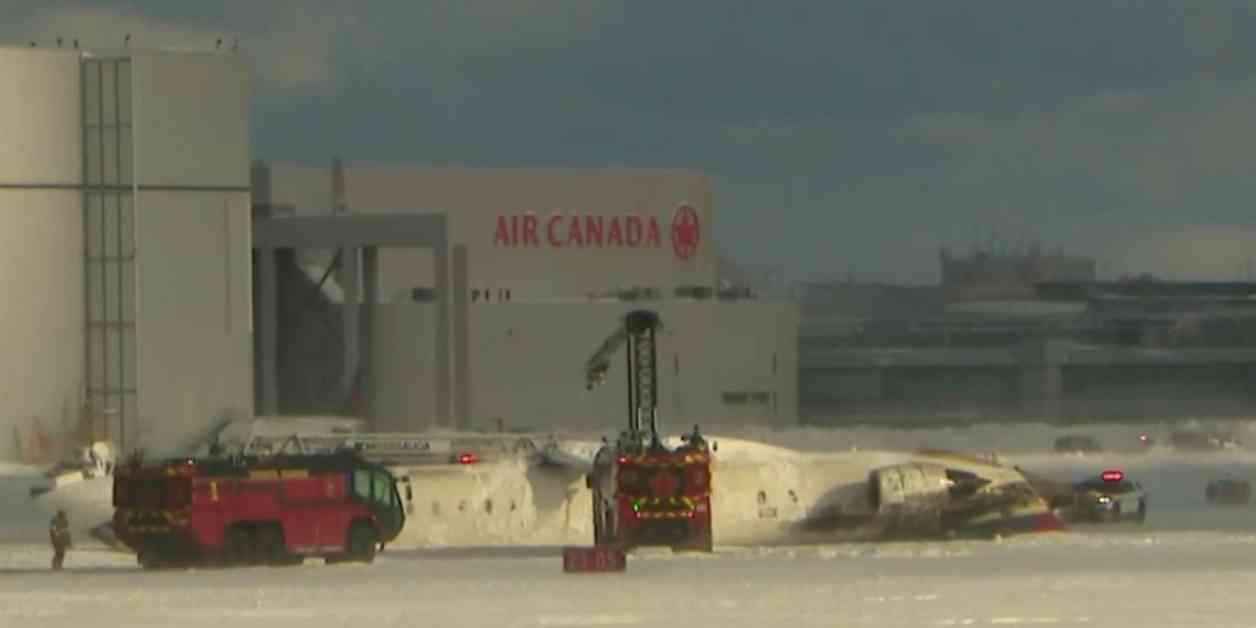A Delta airplane made an emergency landing at Toronto Pearson International Airport, resulting in a dramatic incident where the plane flipped upside down. The unsettling scene unfolded as emergency response teams rushed to the tarmac to assist passengers and crew members amidst the chaos. The pilot’s heroic efforts to navigate the unexpected emergency were unfortunately not enough to prevent the aircraft from overturning upon landing. The incident left many wondering about the safety protocols in place and the potential factors that led to such a harrowing ordeal.
Unforeseen Turbulence: The Delta Plane Emergency Landing
Eyewitnesses described a tense atmosphere as the Delta plane approached the runway, with some passengers reporting unusual sounds and vibrations before the aircraft touched down. As the plane made contact with the ground, a series of events unfolded rapidly, culminating in the plane flipping over and coming to a rest on its roof. The harrowing experience left many shaken and in disbelief as emergency responders worked swiftly to evacuate the passengers and crew from the overturned aircraft.
Expert commentary from aviation specialists shed light on the potential causes of the incident, citing factors such as mechanical failure, pilot error, or adverse weather conditions as possible contributors to the emergency landing. The investigation into the circumstances surrounding the Delta plane’s flip continues, with authorities working diligently to uncover the root cause of the frightening ordeal. As passengers and crew members recover from the shock of the incident, questions linger about the safety measures in place to prevent such occurrences in the future.
Navigating Turbulent Skies: Ensuring Passenger Safety
In the aftermath of the Delta plane’s emergency landing, aviation experts emphasized the importance of stringent safety protocols and regular maintenance checks to prevent similar incidents from happening. The aviation industry’s commitment to passenger safety remains paramount, with airlines continuously striving to enhance training programs and implement advanced technologies to mitigate risks during flights. As passengers grapple with the aftermath of the harrowing experience, airlines are urged to prioritize transparency and communication to address concerns and reassure travelers of their commitment to safety.
Passenger safety is a top priority for airlines worldwide, with stringent regulations and protocols in place to ensure the well-being of those on board. The Delta plane incident serves as a stark reminder of the inherent risks associated with air travel, underscoring the need for constant vigilance and preparedness in the face of unforeseen emergencies. As the investigation into the incident unfolds, stakeholders across the aviation industry are reminded of the importance of collaboration and transparency in upholding safety standards and protecting passengers and crew members from potential harm.
As authorities continue to investigate the circumstances surrounding the Delta plane’s emergency landing and subsequent overturning, passengers and aviation enthusiasts alike are left to ponder the fragility of air travel and the critical role of safety measures in ensuring the well-being of those on board. The incident serves as a sobering reminder of the unpredictable nature of aviation and the need for constant vigilance and preparedness in the face of emergencies. With a renewed focus on safety protocols and risk mitigation strategies, the aviation industry remains committed to maintaining the highest standards of passenger safety and security in an ever-evolving landscape of air travel.


